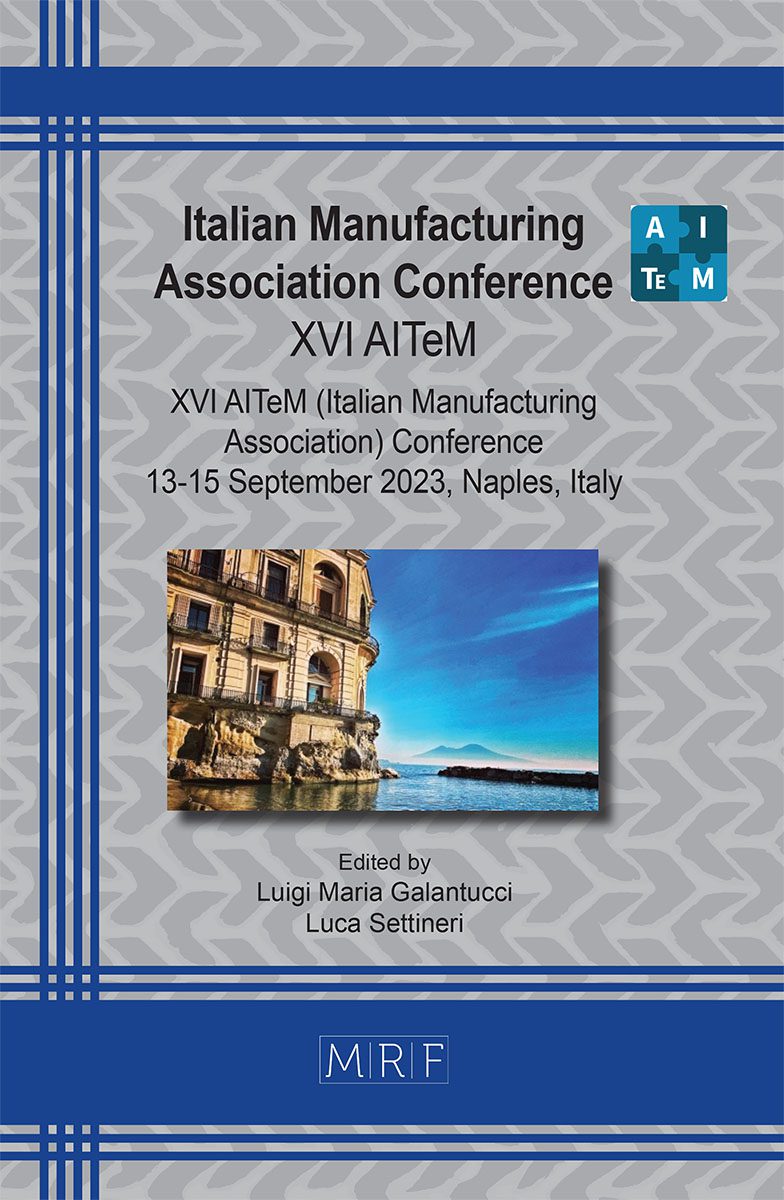A novel application of cryogenics in dieless sheet metal piercing
Paolo Albertelli, Valerio Mussi, Michele Monno
download PDFAbstract. In tube punching, if the internal die is necessary to properly pierce the tube avoiding its collapse, it also represents a bottleneck to a rapid change of the punching set. In this research an innovative dieless tube punching approach has been conceived and studied. The use of a cryogenic fluid to force the material ductile-brittle transition is a way to limit the sheet deformation during the piercing process. The analysis of the innovative cryogenic punching was carried out both adopting numerical and experimental methodologies. A finite element FE model of the cryogenic punching was developed and updated in two stages. First, experimental tensile tests, performed at cryogenic temperatures, were used to characterize some material properties. Secondly, some piercing tests in cryogenic conditions were performed at different velocities and temperatures to fine update the model. A validation session was carried out to assess the model and the process feasibility. It was found that the FE model reproduced the experimental results within a maximum estimation error of 10% on both the punching force and tube deflection. Results showed that both the increment of the punching velocity and especially the decrement of the punching temperature could be the only viable solution for making the tube dieless punching industrially feasible.
Keywords
Piercing, Cryogenic, Constitutive Models
Published online 9/5/2023, 8 pages
Copyright © 2023 by the author(s)
Published under license by Materials Research Forum LLC., Millersville PA, USA
Citation: Paolo Albertelli, Valerio Mussi, Michele Monno, A novel application of cryogenics in dieless sheet metal piercing, Materials Research Proceedings, Vol. 35, pp 326-333, 2023
DOI: https://doi.org/10.21741/9781644902714-39
The article was published as article 39 of the book Italian Manufacturing Association Conference
![]() Content from this work may be used under the terms of the Creative Commons Attribution 3.0 license. Any further distribution of this work must maintain attribution to the author(s) and the title of the work, journal citation and DOI.
Content from this work may be used under the terms of the Creative Commons Attribution 3.0 license. Any further distribution of this work must maintain attribution to the author(s) and the title of the work, journal citation and DOI.
References
[1] I.S. Jawahir, H. Attia, D. Biermann, J. Duflou, F. Klocke, D. Meyer, S.T.T. Newman, F. Pusavec, M. Putz, J. Rech, V. Schulze, D. Umbrello, Cryogenic manufacturing processes, CIRP Ann Manuf Technol. 65 (2016) 713–736. https://doi.org/10.1016/j.cirp.2016.06.007
[2] X. Wang, X. Fan, X. Chen, S. Yuan, Forming limit of 6061 aluminum alloy tube at cryogenic temperatures, J Mater Process Technol. 306 (2022) 117649. https://doi.org/10.1016/J.JMATPROTEC.2022.117649
[3] P. Albertelli, M. Strano, M. Monno, Simulation of the effects of cryogenic liquid nitrogen jets in Ti6Al4V milling, J Manuf Process. 85 (2023) 323–344. https://doi.org/10.1016/J.JMAPRO.2022.11.053
[4] R. Schwab, A. Harter, Extracting true stresses and strains from nominal stresses and strains in tensile testing, Strain. 57 (2021). https://doi.org/10.1111/STR.12396
[5] ISO 6892-3, Metallic Materials – Tensile testing – part 3, (2015).































